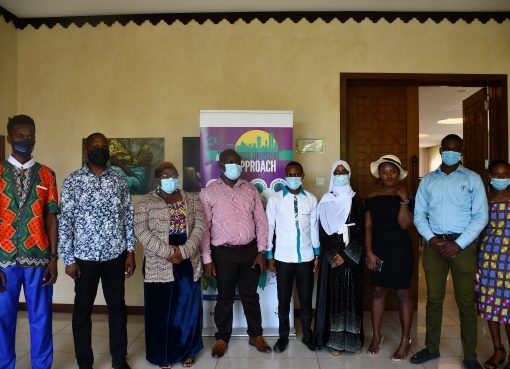The County Assembly of Nakuru has been urged to provide leadership in overcoming the malnutrition crisis facing the County by continuously coming up with relevant policy actions and allocating resources.
County Executive Committee Member (CECM) in charge of Health Ms Jacqueline Osoro voiced the County administration’s commitment in ensuring that nutrition takes its rightful place in policy and programme prioritization adding that Members of County Assembly (MCAs) had numerous opportunities to galvanize positive actions and resources to end malnutrition challenge.
While noting that many advances had been made on causes of malnutrition and how to address the problem, Ms Osoro advised that it was now time for the MCAs, planners and policy makers to give nutrition matters enough attention and resources.
“If there is anything we owe to our children and future generations it is the firm commitment and action to transform and model ways of sustaining a healthy human race,” stated Ms Osoro.
Speaking during an advocacy engagement between MCAs from the Health and Budget Committees, officials from the Department of Health and representatives from Nutrition International (NI), the CECM said the meeting was part of a series of steps taken by the County administration to connect the political leadership and evidence-based nutrition plans with implementation processes and sustainable domestic financing models.
Ms Osoro further said that it requires a multi-sectoral approach to address malnutrition by bringing on board health, agriculture, education, gender, sports, and water and sanitation professionals.
She said though malnutrition posed a significant public health threat standing at 18.5 per cent, the County Government had taken concrete action to improve nutrition programmes and policies to bolster the health and wellbeing of the population through implementation of a Sh2.55 billion County Nutrition Action Plan (CNAP).
Ms Osoro said CNAP which was developed with financial and technical support of Nutrition International, county administration and nutrition stakeholders, was guiding the devolved unit in scaling-up of nutrition interventions over the next two years.
Nutrition International supported the development of the CNAP through its Nutrition Technical Assistance Mechanism’s Technical Assistance for Nutrition project, funded with UK aid from the United Kingdom government. Other partners who offered technical support include the Ministry of Health’s Nutrition and Dietetics Unit, United States Agency for International Development (USAID), Afya Uzazi and Egerton University.
To address under -nutrition, Ms Osoro said the County administration had introduced community-based management, supplementation feeding programmes for pregnant women and capacity building for healthcare workers to offer nutrition services in all health facilities.
While acknowledging that Malnutrition had both health and economic consequences and undermines basic human rights, Ms Osoro said the County was targeting to reduce malnutrition by 60 percent and 58 percent in children under five and expectant women respectively in the next five years as outlined in the County 2020-2025 CNAP.
Other interventions by the county towards addressing malnutrition are provision of affordable healthcare services and medical and nutrition commodities and supplies to hospitals, said the CECM.
The CECM revealed that the county government was also supporting various programs aimed at ensuring that the target population was nutritionally safe and that there was enough of nutrition-rich food, that the nutritional food was affordable and accessible to the low-income consumers and that there was a productivity and respect for biodiversity and ecosystems.
She stated that to ensure sustainability in these interventions, plans were underway by Governor Kihika’s administration to strengthen its partnerships with Nutrition International beyond the stated financing period.
Nutrition International Kenya Country Director Martha Nyagaya regretted that one out of every three people in the world is malnourished but assured that the challenge was solvable if only the health system could create health care opportunities for its people.
The Country Director pointed out that adolescent girls and women were the most vulnerable due to biological and sociological aspects adding that solution to under nutrition lies at low-cost intervention mechanisms which need to be scaled up by actively involving individuals, families and the communities.
According to chief officer medical services in the County, Dr John Murima, over time, people have been emphasizing more on the need to eat a well-balanced diet, leaving aside important dietary aspects like minerals and trace elements like zinc, magnesium, calcium and potassium among others.
“Good nutrition is vital for all people especially vulnerable groups including children lactating mothers, the aged and the sick. There is need to look at food from not only an aspect of food security, but also nutritional security,” he observed.
He urged stakeholders to work with research organizations and academic institutions to address food insecurity and malnutrition.
According to statistics from the devolved unit’s Department of Health, of the 275,921 children under five living in the county, an estimated 27.9 percent are stunted, which is way above the national level of 26 percent, a further 5 percent are wasted while 10.2 percent are underweight.
The Kenya Demographic Health Survey (2014) indicated that 75,439 children in Nakuru County were stunted while malnutrition causes an estimated 17,033 cases of low birth weight and underweight annually.
The interventions outlined in Nakuru County CNAP are projected to result in 1,473 child deaths averted, 22,453 cases of anaemia prevented in pregnant women and 4,666 cases of anaemia avoided in adolescent girls.
Official records from County Department of health indicate that malnutrition costs the health system an estimated Sh.175.6 million per year, and that the menace had reduced education performance of learners with Nakuru recording an average annual 333 cases of class repetitions and drop outs due to stunting.
By Esther Mwangi and Angela Cherotich





